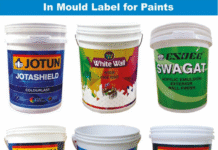The UFlex plant in Gwalior, Madhya Pradesh, focuses on the recycling of multi-layered aseptic cartons widely used for convenient and functional drinks, nutraceutical beverages, and non-alcoholic and milk-based drinks to extend the shelf life of the product. The packaging solution provider organized a visit to the recycling plant for media personnel to witness their efforts, in which we also took part. The company emphasized an Enzymatic Delamination Technology, which it has collaboratively developed and which enables the delamination of paper from the polyethylene/aluminum foil layers of the multi-layered laminate used in aseptic cartons.
The idea stemmed from the company’s Asepto liquid aseptic packaging business, which encountered limitations in the lateral or up-cycling of the laminates that are usually compacted into boards, which may not translate into the optimum value creation associated with the concept of a circular economy. A liquid aseptic carton comprises layers of paper and aluminum foil sealed together and laminated using extrusion lamination with polyethylene (PE) for the needed moisture and oxygen barriers. The difficulty in separating these layers – of paper from polyethylene and aluminum foil in multi-layered packaging has been hindering the sustainable growth of the beverage packaging industry. In terms of both sustainability and circular economy, the PE layer is the Achilles’ heel of aseptic carton recycling.

As Packaging South Asia has reported earlier, Ashok Chaturvedi, the chairman and managing director of UFlex, said, “Enzymatic delamination utilizes enzymes to break the bonding between different layers of the packaging materials, allowing the individual separation of paper and the polyethylene and aluminum foil of the multi-layered aseptic packaging which can be reused in the production of new products.”
The paper component of aseptic packaging can be separated and recycled into new paper products although perhaps not for the paper layer in aseptic packaging. The recovered pulp is commercially used to produce items such as cardboard, tissues, and paper towels. However, after separation, the polyethylene and aluminum foil layer remains – which can be shredded and used in manufacturing other products. Currently, polyethylene aluminum composite board is a construction material made from this residual material.
Jeevaraj Pillai, chief sustainability officer and president of UFlex’s flexible packaging business and new product development, said that the technology the company is utilizing at its Gwalior plant is non-proprietary. “What we are doing at the recycling plant is not even a Corporate Social Responsibility (CSR) activity. This should be taken care of by brand owners. What we are trying to accomplish here is not easy, and nowhere near perfect, so a collaborative effort is much needed for growth in the technological aspect and ascertaining the value chain proposition of the end products.”
Cooperation, collaboration and government help needed
UFlex’s desire to create a recyclability scenario for aseptic liquid packaging requires collaborative efforts from brand owners and the government to pay heed to this segment for its continued healthy growth. Waste collection, segregation, investments, energy, and customized technology to recycle are the areas in which the packaging solution provider is seeking cooperation and support.
The recycling process shown at Gwalior is not very labor-intensive. After segregating the materials manually, they undergo shredding. The shredded material is then processed in an HC (high-consistency) pulper with enzyme treatment, leading to the separation of paper and the polyethylene/aluminum foil lamination layers. With two to three rounds of screening, the paper pulp and polyethylene/aluminum foil laminates are separated. From this point onward, each material follows a different path – the paper pulp is converted into sheets and sold to other paper-based converters, while the polyethylene/aluminum foil laminates are shredded and converted into thick sheets currently used in the manufacture of composite boards.
“While we have invested our own time and money and developed technology to pave the way for recycling in India, we believe that adequate regulatory support in creating the right environment to boost recycling is the need of the hour. Often, a well-drafted law accelerates the pace of change like nothing else,” adds Chaturvedi.











